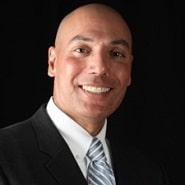
Albert Villarin, MD, CMIO & Associate CIO, Staten Island University Hospital
The healthcare Internet of Things (IoT), or the Internet of Medical Things (IoMT), is gaining serious traction, with hospitals investing an estimated $41.22 billion on strategies this year. That amount is predicted to quadruple to $163.24 billion by 2020, according to Research and Markets.
To ensure that connected care really does drive efficiency and better patient outcomes, healthcare organizations will need to ensure that data can flow freely between systems, rather than becoming fragmented and actually slowing down processes. How important is a smooth flow of information? It’s critical, considering that McKinsey pegs 40 to 60 percent of IoT value on interoperability.
But with an ever-growing pool of data, an ever-growing inventory of connected devices, and some industry roadblocks, siloes are increasingly difficult to avoid.
So far in this series, we’ve discussed the advantages and security implications of healthcare IoT. Now let’s consider the pitfalls and opportunities in integrating new solutions into the larger healthcare technology ecosystem.
Roadblocks to Interoperability
We all know that finding the right app to monitor any given set of digital devices is difficult — partly because of so many promising options. So you might think you could find an array of application program interface (API) options that would make interoperability easy in the healthcare IoT. But that’s not the case. Despite the financial — and federal — mandate to achieve interoperability, progress has been uneven and challenging.
As the Center for Medical Interoperability asks: “Why is it so hard?”
First, there’s the simple matter of playing catch-up to a runaway data train. More wearables, sensors, and smart devices are flooding the data pool, creating ever-more information to safely and effectively manage.
The nature of the data is changing, too. What will a typical patient profile look like in a year? In 5 years? It’s difficult to predict, considering the still-unquantifiable value of being able to access more complex data than we’ve ever been able to consider. For example, a future patient file might include not only clinical data like lab results and symptoms, but also more social and behavioral data. But, before that file is recorded, standards will have to be established and best practices discovered.
In addition to the changing nature of data is the challenge emerging from the convergence of device manufacturing and app development. Healthcare IT teams already must work with numerous vendors to coordinate different apps and devices, many burdened with proprietary interfaces. That makes it especially difficult to create a management system that can efficiently integrate new apps and devices. Add in countless more devices and apps, and the management side gets challenging.
Keeping the Faith
Maintaining interoperability may not be easy, but help is on the way. Several federal agencies and organizations are developing standards that support interoperability goals. ONC’s HIT roadmap on interoperability makes the case for federal standards. The aforementioned Center for Medical Interoperability is working to develop device interoperability. The Argonaut Project is working with device-makers and IT providers to develop an API specifically for healthcare device interoperability.
In addition, it’s already possible to manage today’s data with today’s APIs, especially when you have the right partner to structure the solution.
What’s key is that interoperability is not a one-time event. Between emerging standards, ongoing innovations, and explosive data growth, the IoMT is a fast-changing playing field. To sustain interoperability — and thereby improve patient care — you’ll need to commit to regular analysis, and be prepared for change.
This piece is the third in a blog series written by Albert Villarin, MD, who serves as CMIO of Staten Island University Hospital (part of Northwell Health), and CMIO at Burwood Group. The first two parts focused on the key benefits of connected care and on how to keep data secure, and the final segment on Healthcare IoT will discuss how to win at adoption. To follow Burwood Group on Twitter, click here.


Share Your Thoughts
You must be logged in to post a comment.